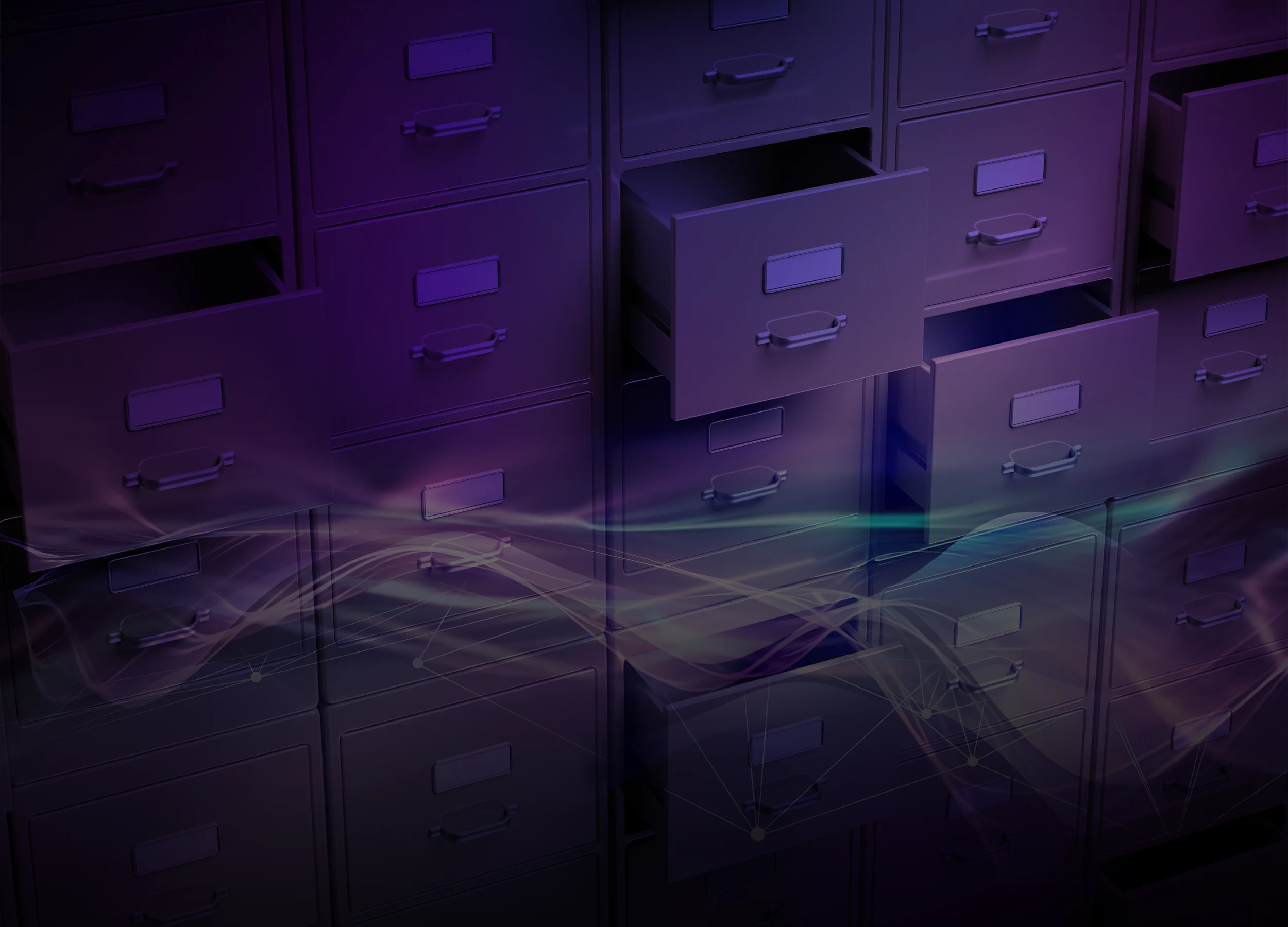The best digital tools for lawyers
The best digital tools for lawyers
We are in the era of digitalisation and in a position to consider new objectives based on Big Data. Storage capacity has increased exponentially in recent years, this has allowed administrations to have huge databases for a long time. To manage, store, leverage and export this information, it is essential to implement digitisation.
- The digital transformation of the justice sector
- How do I know what digital tools I need?
- Types of Digital Tools
- Benefits of using digital tools
1. The digital transformation of the justice sector
Law firms are increasingly relying on digital technology. A study conducted by the consultancy Opinaia revealed that three out of four legal professionals increased their use of technology between 2020 and 2021.
In Spain, measures focused on the digitalisation of justice are also being implemented. Proof of this is the Justice 2030 Plan, based on 3 pillars:
- Law on the digital efficiency of the public justice service: it seeks to create a new data-driven information architecture and guarantee digital legal certainty in procedures.
- Legislative/judicial analytics: there will be a Big Data system with large amounts of information that is difficult to process. To do so requires the implementation of artificial intelligence that will facilitate rapid prosecution for intelligent justice.
- Telematic actions: the objective of the project is to implement actions that allow telematic management through three sub-projects: Digital immediacy and non-face-to-face services, Digital Public Faith, relocated workplace and teleworking.
2. How do I know what digital tools I need?
As we well know, not all companies are the same, the work methodology, the objectives of the company, the organisational culture, or the portfolio of clients they manage can vary, so it is important to know the aspects that must be taken into account to choose the digital tools that best suit the needs of the company:
- Define what the problem is to know where the difficulty is
- Know what type of digital tool is required: when the problem is already identified, you can investigate the different platforms that can solve the needs.
- Think about how to apply the tool in the sector: Many of these solutions come from IT specialists who do not necessarily know the legal industry in depth, so it is always good to think about how the tool would be applied in daily work.
While there are numerous specialised legal-tech software, choosing the best tools for lawyers should be done carefully, as the goal is to make the job more efficient and practical, rather than becoming an unnecessary burden.
Before choosing a software for lawyers it is advisable to consider the following factors:
- The most recommended technology for this type of software are cloud or cloud technologies
- Good legal-tech software provides a high level of security
- The most efficient lawyer software is versatile and allows you to customise the work
- The more compatibility between systems the software presents, the better
- The price of the tool must be adjusted to the needs of the firm
3. Types of Digital Tools
There are numerous digital tools based on Artificial Intelligence. These are its most outstanding features:
- CRM (Customer Relationship Management): is the database with the information of all our customers. It helps us organise the agenda.
- CMS (Case Management Software): is the management of legal cases that helps law firms manage the life cycle of a case through the handling of processes, documents, lawsuits, etc.
- Timesheets: essential to keep track of billing and accounting in the office. The financial area cannot be neglected.
- Digital signature: it is essential to incorporate this solution, which facilitates communication with clients, courts and other offices.
- Transcription Software: Legal transcription is the conversion of any legal and audio material to text format. An example of this is the PROBUS software: an online platform for legal professionals that allows you to transcribe, index, analyse and edit content from video or audio recordings of court hearings, arbitrations and statements.
4. Benefits of digitalisation in the legal sector
#1. Legal workflow tools help eliminate human error from your legal documents and case procedures. Therefore, there is a saving of time to deal with customers and their cases instead of fixing errors.
#2. In the legal arena, security is paramount. Protecting customer data is a challenging task in conventional legal practices. To avoid theft, data copying or loss of information it is highly recommended to work with a legal document processing system.
#3. In Spain, the systems are not yet compatible between autonomous communities, which can lead to problems of competences. There are many drawbacks due to the lack of communication between administrations. This situation will improve as soon as a centralised software system is implemented.
#4. Most law firms need to hire teams of paralegals just to keep track of legislative changes happening around the world. It’s a huge capital expenditure. You can invest in affordable legal data intelligence software and reduce unnecessary personnel costs.
#5. Many courthouses have entire courtrooms full of records. Legal cases include thousands of references to the penal code, quotes from historical cases, legal documents, etc. Collecting them in one place in an orderly manner requires many billable hours. With digital software you can access them easily and quickly.
This are the best digital tools for lawyers
* * *
The potential of the application of techniques based on Artificial Intelligence specialised in the field of the Administration of Justice, such as Probus’ transcription software, can contribute significantly to an improvement in Justice, since it would allow it to be more transparent, efficient, agile and effective, and offer a closer and quality service to the citizen.
What is an automatic transcription for lawyers and how is it carried out?
What is an automatic transcription for lawyers and how is it carried out?
Nowadays, transcriptions in the legal sector are becoming crucial, given that with the establishment of the new Spanish Law 13/2009 of November 11th, the audiovisual recording of the oral proceedings in the corresponding device is introduced; making unessential the drafting of the trial proceedings by the Lawyer of the Administration of Justice, like traditionally, and thus replacing the steno-typist work of the manual stenographer with a transcription of the proceedings.
In addition, transcripts save time and money for lawyers and other professionals in the sector by having access to detailed written content of oral hearings, declarations, and other proceedings.
- What is needed to make a transcription?
- What technologies are needed?
- Is there a solution that allows trial transcripts?
- What are the advantages of automatically transcribing a judgment?
What is an automatic transcription for lawyers and how is it carried out?
1. What do we need to make a transcription?
A transcription consists of converting an audio or video file to a text file. There are two main types of transcription: literal transcription and natural transcription.
In a trial the judge usually requires a literal transcript. That is, transcribing everything that is said, errors and repetitions of the participants included, without restructuring the sentences, correcting errors, or modifying the oral message, unlike natural transcription, which, by not including this type of actions, is usually less reliable and of shorter duration.
Transcription requires equipment that allows for very high signal qualities in the recordings and, at the same time, very powerful transcription software.
2. What technologies are needed?
A software indicated to perform a correct transcription is one that has a series of technologies, among which are, mainly:
- Voice ID, through voice biometrics that recognises and authenticates an individual’s identity
- Speech to text: audio-to-text transcription, sometimes in different languages
- Audio Fingerprint: automatic identification of audio fingerprints, to be able to identify and compare interlocutors through their voice patterns
3. Is there a solution that allows trial transcripts?
Probus trial transcription software is a cloud solution that has those technologies, being the ideal solution for all legal professionals.
The price of a transcript varies according to the characteristics of each demand. Probus is a SaaS platform, which offers options adapted to each volume of work, whether pay per use, indicated for independent legal professionals, or through a monthly subscription designed for large law firms. Thus, Probus allows you to easily work collaboratively with your team on the same document.
In addition, Probus uses artificial intelligence constituted in AWS, with the maximum guarantee of security and privacy.
With Probus you can automatically transcribe any audio and video file in minutes, saving time in reviewing recordings since you do not need to view them. In addition, it has a drop-down timeline with annotation filters, transcription and clips to directly access the desired moment of the session.
As for the additional equipment, with Probus you do not need to convert any file to import your sessions. You can use any recording format (.mov, .mp4, .avi, .flv…) and import it directly into the platform to start transcribing content. No conversion, adaptation, or other additional adjustments.
4. What are the advantages of automatically transcribing a judgment?
In the legal field, where it is extremely important in which context the interlocutor says something, having the professional transcript of a trial is a really useful resource.
Accuracy in legal transcription is key, as it plays a decisive role in trials by providing the evidence needed to determine the outcome of a case.
In addition, this service is framed within the implementation of the new Spanish Procedural Efficiency Law that enhances orality within procedural procedures. This law, which is part of the Justice 2030 Plan, aims to streamline the activity of Justice in structural terms, facilitate social cohesion and contribute to the sustainability of the system.
* * *
In conclusion, transcription software such as Probus facilitates the daily work of judges, prosecutors, lawyers of the Administration of Justice and offices, as well as lawyers, prosecutors, and mediators. All of them will be able to access the recording of the trials without having to make the complete visualisation of the trial, as is the case now, allowing them to reduce viewing times and the costs associated with it.
How much does a court transcription cost?
Options adapted to each workload
START (Pay per Use)
Single €15 payment, with access to the platform during one year including the first hour of free transcription- Billing
- Unique Payment + Transcribed Hours
- Hours included
- 1h (during the test year)
- Additional hour transcribed
- From €8 / H (see packs)
- Medium
- Online Basic
- Users
- 1 / count
- Transcription
- ENG
- Export in Word
- Basic
- Editing platform access
- -
- -
- -
- -
- -
PRO (with Archive)
Monthly €15 payment with historical archiving, a monthly hour transcription included and advanced functionalities.- Billing
- Monthly + Transcribed Hours
- Hours included
- 1h (every month)
- Additional hour transcribed
- From €8 / H (see packs)
- Medium
- OnlineStandard
- Users
- 1 / count
- Transcription
- ENG
- Export in Word
- Customizable
- Editing platform access
- Cases archive **
- Team collaboration
- -
- -
- **Max. storage 50 Gb
LAW FIRM
Monthly payment, access to premium features and payment for hours of transcription used broken down by client- Billing
- Monthly + Transcribed Hours Breakdown
- Hours included
- According to plan
- Additional hour transcribed
- From €8 / H (see packs)
- Medium
- Premium Telephone
- Users
- Unlimited
- Transcription
- Multi-language
- Export in Word
- Advanced
- Editing platform access
- Cases archive **
- Team collaboration
- Access to Video History
- Club Probus
- -
Legal professionals work with a large amount of audio and video recordings on a daily basis: witness statements, legal settlements, trial recordings etc. Nowadays, these files are transcribed into text, either manually by legal transcriptionists or automatically using digital tools such as applications or software.
- What does a court transcription consist of?
- The work of transcribers, stenographers and steno typists
- How much does a court transcription cost?
- Probus transcription software
1. What does a court transcription consist of?
Court transcription is the use of shorthand methods and devices to capture, store, retrieve and transcribe pre-trial and trial proceedings or other information. It includes stenographers who operate computerized captioning devices that provide captioned versions of live or pre-recorded broadcasts to the hearing impaired.
In the legal sector the type of transcription should be literal or verbatim. This is because the way someone says something is as important as what they are saying, and is key to establishing verdicts.
Some of the most common legal recordings that require verbatim transcription are depositions, hearings, suspect interviews, witness statements, interrogations, and any other type of court proceeding
2. The work of transcribers, stenographers and steno typists
Shorthand is a fast and concise writing system that allows speech to be transcribed at the same speed as it is spoken. For this purpose, short strokes, abbreviations and special characters are usually used to represent letters, words and even sentences.
Stenotyping, a system similar to stenography, is a method of rapid writing that requires a keyboard called a stenotype machine. With this device, keystrokes can be executed with one or more keys pressed simultaneously. The operator is called a stenotypist.
Transcription (from the Latin transcriptio) is the systematic representation of a spoken form by means of written signs. Phonetic transcription (or phonetic notation) is a system of graphic symbols to represent the sounds of human speech.
The requirements for a transcriber working within the framework of a police/judicial investigation should be very specific given the confidential nature and circumstances of this work.
3. How much does a court transcription cost?
A work as apparently mechanized and simple as transcription has limitations: problems of intelligibility due to sounds, interferences or overlaps between various speakers; the convenience of using a generalized transcription system that marks the relevant aspects for subsequent analysis, and the need for in-depth knowledge of the language as well as the dialects and slang used.
You have to be a fast typist to make the work profitable. This is because most jobs are paid per word or per “audio minute”. Depending on the complexity of the audio and the speed with which it is typed, one minute of audio can take between two and six minutes to transcribe.
In the legal field, the Corps of Writers, Stenographers and Stenotypists is two hundred years old, and is one of the most important in the context of the General Courts.. A parliamentary stenographer can earn around 3,000 euros gross per month.
4. Probus transcription software
Probus is an online platform for legal professionals to transcribe, index, analyse and edit content from video or audio recordings of court hearings, arbitrations and depositions.
The price of a transcript varies according to the characteristics of each lawsuit.
Probus is a SaaS platform, which offers options adapted to each workload, both for independent legal professionals and for large law firms.
You can choose the plan that best suits your needs:
- Now Plan: if you are a freelancer looking for something specific, this is the plan for you, as it allows you to pay only for what you use
- Monthly Plan: subscription with a bag of hours and other functionalities
- Office Plan: the optimal option for large law firms that also allows multi-user management.
In addition, with Probus you can cancel your plan at any time. Please note that this decision means that the contracted hours will be lost and, therefore, you will have to use them before the end of the billing period.
In this summary table you can see more details of each plan and its features:



